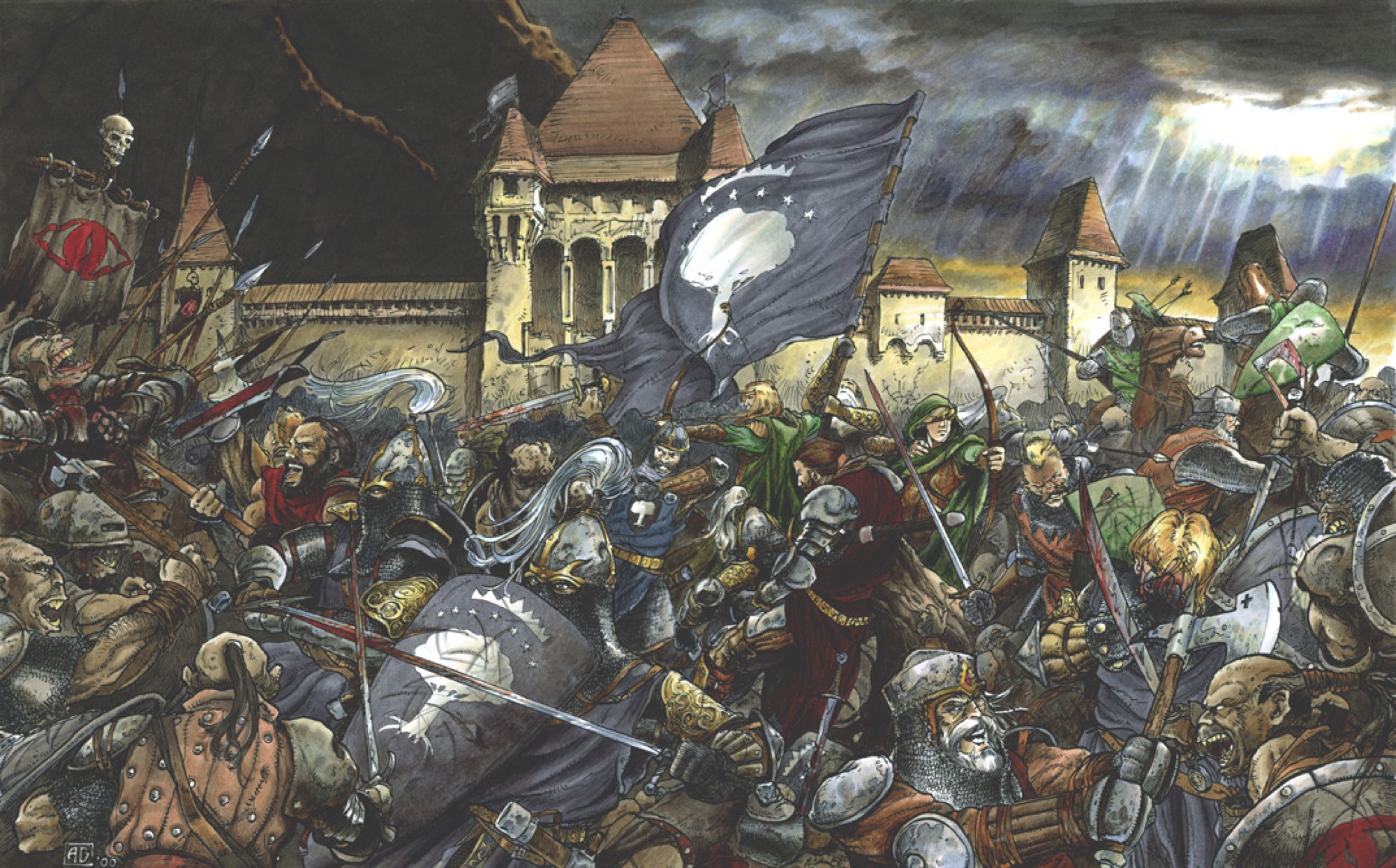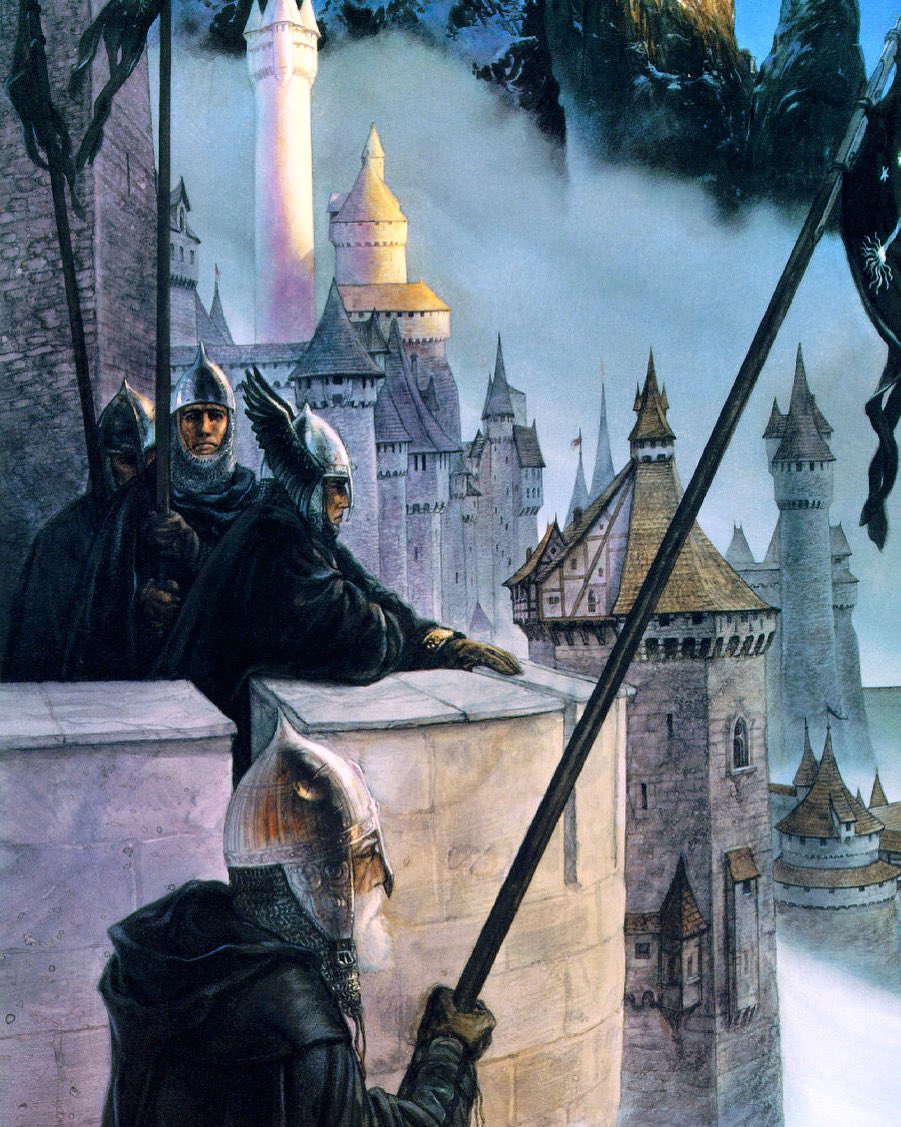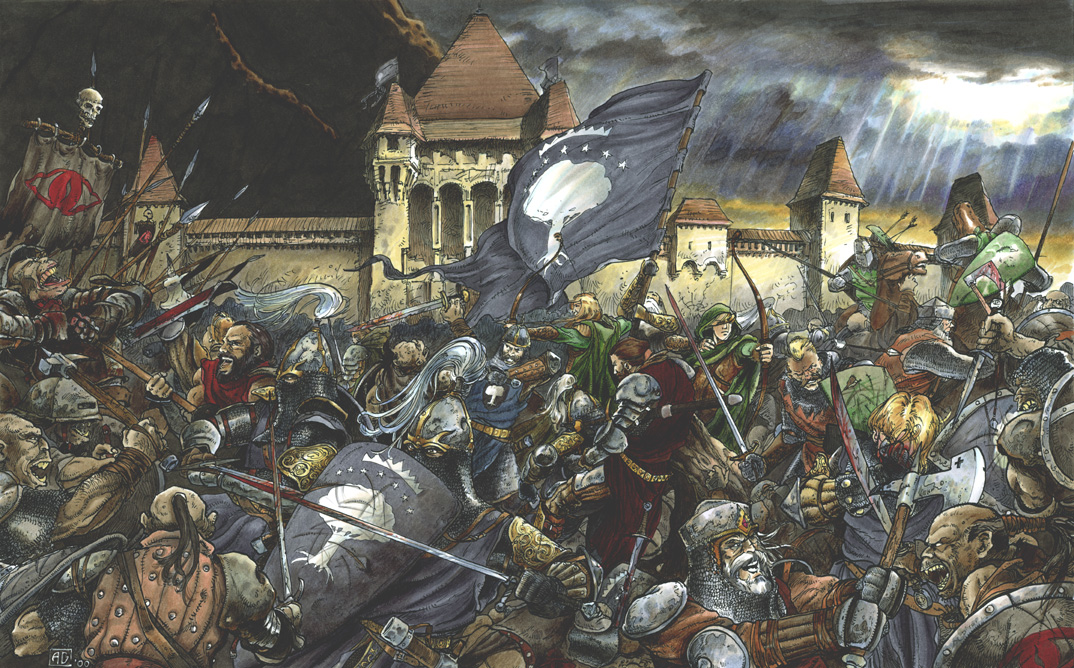Beyond the Gate there was a crowd of men along the verge of the road and of the great paved space into which all the ways to Minas Tirith ran. All eyes were turned southwards, and soon a murmur rose: 'There is dust away there! They are coming!'....
Horns sounded at some distance, and the noise of cheering rolled towards them like a gathering wind. Then there was a loud trumpet-blast, and all about them people were shouting.
'Forlong! Forlong!' Pippin heard men calling. 'What do they say?' he asked.
'Forlong has come,' Bergil answered; 'old Forlong the Fat, the Lord of Lossarnach.... Hurrah! Here he is. Good old Forlong!'
Leading the line there came walking a big thick-limbed horse, and on it sat a man... old and grey-bearded, yet mail-clad and black-helmed and bearing a long heavy spear. Behind him marched proudly a dusty line of men, well-armed and bearing great battle-axes; grim-faced they were, and shorter and somewhat swarthier than any men that Pippin had yet seen in Gondor.
'Forlong!' men shouted.... But when the men of Lossarnach had passed they muttered: 'So few! Two hundreds, what are they? We hoped for ten times the number. That will be the new tidings
1 of the black fleet. They are sparing only a tithe of their strength. Still every little is a gain.'
And so the companies came and were hailed and cheered and passed through the Gate, men of the Outlands marching to defend the City of Gondor in a dark hour; but always too few, always less than hope looked for or need asked. The men of Ringló Vale behind the son of their lord, Dervorin striding on foot: three hundreds. From the uplands of Morthond, the great Blackroot Vale, tall Duinhir with his sons, Duilin and Derufin, and five hundred bowmen. From the Anfalas, the Langstrand far away, a long line of men of many sorts, hunters and herdsmen and men of little villages, scantily equipped save for the household of Golasgil their lord. From Lamedon, a few grim hillmen without a captain. Fisher-folk of the Ethir, some hundred or more spared from the ships. Hirluin the Fair of the Green Hills from Pinnath Gelin with three hundreds of gallant green-clad men. And last and proudest, Imrahil, Prince of Dol Amroth, kinsman of the Lord, with gilded banners bearing his token of the Ship and the Silver Swan, and a company of knights in full harness riding grey horses; and behind them seven hundreds of men at arms, tall as lords, grey-eyed, dark-haired, singing as they came.
And that was all, less than three thousands full told. No more would come....

 militaryfantasysf.wordpress.com
militaryfantasysf.wordpress.com

 militaryfantasysf.wordpress.com
militaryfantasysf.wordpress.com





